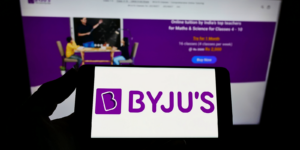
A seismic shift is taking place in the social media landscape, transcending the bounds of major giants like Facebook and Instagram. Brands now want something new to expand their presence, foster connections beyond borders, explore new territories, and realise further engagement opportunities with their users.
As a result, Telegram, Twitch, Clubhouse, LinkedIn, and more alternatives to Instagram have emerged as another source of brand development and audience segmentation.
Exploring the alternative landscape
Businesses must understand how these platforms are helping brands grow and boost sales to create powerful brand campaigns and thrive in an ever-evolving business environment.
Telegram: Telegram has long been engaging users with its messaging platform. Brands have utilised it as an opportunity to enhance creativity and interactively express their brands using easily shared content.
Brands can boost the authenticity of their products by tapping into Telegram trends and challenges to inspire user-generated content.
Twitch: Twitch started as an interactive live-streaming platform for gamers, but it has grown into a hub for content creators of all genres to connect directly with audiences.
Brands use Twitch to engage their communities in real-time through genuine interactions, for instance, KFC’s collaboration with Twitch streamer DrLupo. The strategy utilised Twitch’s interactive nature to increase brand awareness and build connections with potential consumers through live streams featuring contests, where it encouraged viewers to interact via chat to win KFC gift cards.
.thumbnailWrapper{
width:6.62rem !important;
}
.alsoReadTitleImage{
min-width: 81px !important;
min-height: 81px !important;
}
.alsoReadMainTitleText{
font-size: 14px !important;
line-height: 20px !important;
}
.alsoReadHeadText{
font-size: 24px !important;
line-height: 20px !important;
}
}

Clubhouse: Clubhouse is known for providing brands with an audio-based social networking experience that fosters real-time conversations in an intimate and exclusive setting.
Brands can use this platform to host thought-provoking discussions, panel sessions, and Q&A sessions to build deeper ties with target audiences while positioning themselves as industry leaders.
LinkedIn: LinkedIn has been one of the most dominant professional networking applications since it first came out. However, in recent years, it has also become a remarkable platform for sharing content, regardless of a firm’s scale.
It enables companies to demonstrate leadership, establish a brand presence, and network with a large audience in a more business-like manner than ever before. For example, Microsoft, IBM, and Deloitte have taken advantage of LinkedIn to share their business continuity expertise and advertise their goods and services.
Understanding audience dynamics
Brands must build a deeper understanding of effective brand development on these alternative platforms, including distinct user demographics and the behaviours unique to each channel.
They must design content and campaigns depending on these platforms’ audiences and their unique preferences and interests. They can effectively maximise engagement and forge lasting connections by fostering this understanding.
.thumbnailWrapper{
width:6.62rem !important;
}
.alsoReadTitleImage{
min-width: 81px !important;
min-height: 81px !important;
}
.alsoReadMainTitleText{
font-size: 14px !important;
line-height: 20px !important;
}
.alsoReadHeadText{
font-size: 24px !important;
line-height: 20px !important;
}
}

Challenges and opportunities
The process of entering the environment of alternative social media platforms is not without challenges. Firstly, there will be platform-specific problems, including understanding the algorithms designed to work with them, creating content that fits the unique format of each platform, and adapting to the community’s customs and behaviour patterns.
Yet, these complexities also present opportunities. Brands can become competitive in their operations and establish a strong market presence by embracing these alternative channels early on.
Additionally, each platform allows for a focus on the established content formats, enabling businesses to build relationships via unique marketing strategies tailored to the community’s dynamics.
Expert insights and best practices
Brands should seek guidance from industry experts and follow best practices to ensure success on alternative social media platforms. Here are some insights:
- Each platform has a separate language and a separate culture. To get involved in the community, companies should monitor the trends and adapt their content strategy accordingly.
- Success on other online social networks requires taking advice from experts and sticking to best practices. One of the tips is an experiment. Companies should be ready to take on new platforms, try new content and interaction formats, study the data, and improve their branding strategy.
Social media is constantly evolving, and brands must do it too and dive into alternative channels to stay strong, optimise for relevance to the new social media landscape, and meet the requirements of their target audience.
Brands can leverage these platforms and other alternatives to Instagram to accelerate their growth, engage with their target, and create new social media innovation opportunities.
Vinay Babani is the VP-Operations at SRV Media.
Edited by Suman Singh
(Disclaimer: The views and opinions expressed in this article are those of the author and do not necessarily reflect the views of YourStory.)










